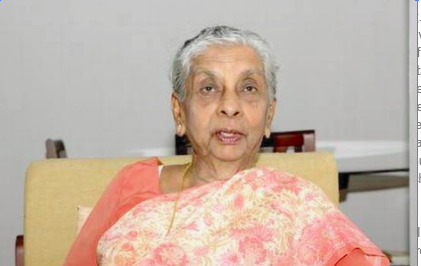Anna Rajam Malhotra, born on 17 July 1927, was a gutsy, determined, and stubbornly honest woman, didn’t let anything hold her back from succeeding in life. She created history by becoming the first female IAS (Indian Administrative Service) officer of independent India. Born in Niranam village in Kerala’s Thiruvalla district, she obtained her Master’s in English literature from Madras University in 1949, and in 1950, passed the civil services examination.
In 1951, opting for the Madras cadre, she was however discouraged from joining the service by the board consisting of four ICS officers, and was instead offered the Foreign Service and Central Services because they were ‘more suitable for women’. But, she argued her case and was allowed to join the IAS. This was her first victory.
The first Chief Minister under whom Anna worked for, C. Rajagopalachari, was in principle, against women entering public service as they would be unable to handle arising law and order situations, take important administerial decisions, or even use discretionary powers as a magistrate. Instead of the charge of a District Sub Collector, he offered Anna a post in the Secretariat instead.
She had to fight a second time for a chance to prove herself, arguing that she was equally competent to men in handling any situation. Anna, who had undergone training in horse riding, rifle and revolver shooting, and in using magisterial powers, did not comply, and was eventually posted as the Sub-Collector of Tirupattur, Hosur in Madras State, again becoming the first woman to do so.
Anna successfully battled all gender prejudices, and carved out a new identity and path for herself. She attributed men’s bias to the conservative patriarchal mindset that prevailed and proved her mettle like no other. She not only shattered the glass ceiling, but never bowed down to anyone. A steely resolve, straight-forwardness and integrity were traits she was associated with and had the courage to stand up to what was right. However, despite her pioneering role, Anna wore her achievements lightly and warmly, and recalled how her finest hours as a bureaucrat were spent with villagers in rural India.
Anna worked under seven chief ministers, and worked closely with Rajiv Gandhi in the Asiad Project, and also accompanied the late Prime Minister Indira Gandhi on an eight-state tour, in her capacity as an agricultural secretary. After retirement in 1996, she was a board member at the Leela Group of Companies.
One of Anna’s biggest achievements was overseeing the successful construction and execution of the country’s first greenfield computerised port, Nhava Sheva (Jawaharlal Nehru Port), as the Chairperson, in May 1989. Concern over congestion at India’s ports necessitated the need to augment handling. Hence the government identified Nhava Sheva as the location for India’s first container port. Anna had to start from scratch in what was then marshy, salt pan land, as she had not handled such a project before. She was awarded the Padma Bhushan in 1989 for this achievement.
Fighting conventions all through her life, was her strong point, except when it came to her own life. Incredibly in 1951, the civil service rules in her appointment order mentioned, “In the event of marriage, your service will be terminated.” However, the rules were changed thereafter. She had fallen in love with her batch mate R.N. Malhotra (later the RBI Governor from 1985 to 1990), but the two of them decided to bide their time as he was a Hindu from Punjab and she, a Christian from Kerala. They kept their relationship tucked away for 25 years, before getting married in 1985 at the age of 50.
Anna, who retired in 1996, was a board member at the Leela Group of Companies. She passed away on 17 September 2018. In death, Anna didn’t want to be put in a coffin, but as per her wish, was cremated and the ashes floated ‘in a good place’.


 [/column]
[/column]